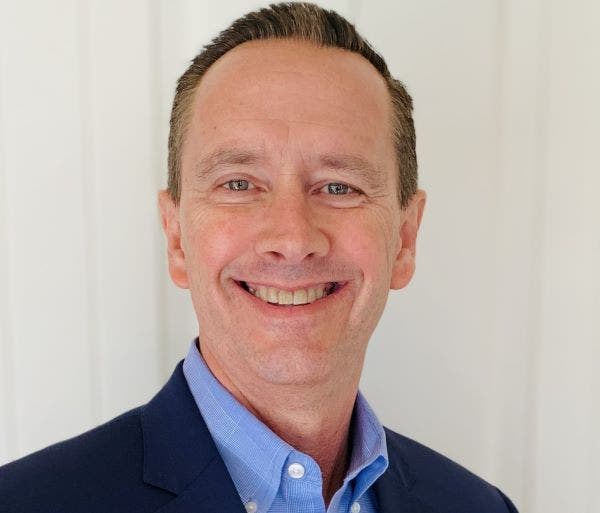Core BTS CEO On M&A, ‘Pretty Aggressive’ Growth Trajectory And 2023 Bets
‘When I think about what we want to accomplish with our acquisition program, it’s really pretty simple, and it’s a couple of things,’ says Kevin Thimjon, CEO of Core BTS. ‘It’s continuing to expand on the capabilities that we have, and if you think about the acquisitions that we’ve done to date, that’s really what we’ve done.’

Core BTS is perfectly positioned for mergers and acquisitions going forward and is “very active” in the space today, according to Kevin Thimjon, CEO of Indianapolis-based Core BTS.
After the company was acquired by Japanese research and consuting firm Nomura Research Institute (NRI) in 2021, Thimjon said the capital and urge to grow capabilities and its footprint is there.
“So we are, I would say, very active in the M&A space today,” he told CRN. “And active doesn’t always mean you’re closing deals, it means we’re looking at a lot of deals. I’m not sitting here worried about whether I can fund a deal or not. It’s all about focusing on finding the right deal.”
[Related: Core BTS CRO: ‘We’re Going To Be A Force To Be Reckoned With’]
Thimjon assumed the role of CEO on January 1, but he’s no newcomer to the solutions provider, which is No. 161 on CRN’s 2022 Solution Provider 500 list.
“I’ve been the CFO here for almost the last three years. I would call myself more of an operational CFO, so I was kind of playing the CFO/CEO role already,” he said. “I was pretty involved in a lot of the operational activities. As I think about moving into my new role, there are things like creating the right cultural message for our organization, which is committed to excellence.”
Former CEO Paul Lidsky has moved over to executive chairman of the board but still talks regularly with Thimjon.
“As an organization we’re being pretty aggressive with growth,” Thimjon said. “One of the messages that I am driving home with my team is if we want to get to where we want to go, we’ve got to raise the bar in everything we do. I want to make sure that we’re raising the bar in how we’re delivering for our customers every day and how we’re working with our teammates within Core BTS every day.”
CRN spoke to Thimjon about his M&A strategy, his goals for the company and what to expect from Core BTS this year.

Where do you think Core BTS will see the most revenue growth this year?
I think it’s just in bringing all of our capabilities together. We’ve done all these acquisitions and we’ve been very pleased with each of them. But, and this is not unusual, we haven’t yet capitalized on bringing all the capabilities to each client. With each of our clients it’s being able to get wider and deeper and provide them with better solutions. To me, I think the number one place we will grow is just being able to provide more services to our existing customers.
But when you’re adding additional account executives, that obviously is also going to help drive new growth. So for us, it’s really a combination of providing better services to our existing customers, and with the acquisition of some new account executives, adding some new accounts to the portfolio that over time have that same approach where you’ll be able to offer them more. You’ve got to meet the client where they’re at in their journey, and their journey is, ‘We want to buy everything from you.’ You start to understand where they’re trying to go long term, and you help build that roadmap for them.

You mentioned a few acquisitions you've made over the past few years. What is your M&A strategy going forward?
It’s an interesting time in the marketplace, you’ve got higher interest rates. You’ve seen maybe less activity lately, especially from some of the more common players, because of the interest rate environment. I wouldn’t say we are shielded from that because we have a very well-capitalized parent company that bought us with the idea of having us both grow organically and through acquisitions. So we are, I would say, very active in the M&A space today. And active doesn’t always mean you’re closing deals, it means we’re looking at a lot of deals. I’m not sitting here worried about whether I can fund a deal or not. It’s all about focusing on finding the right deal.
When I think about what we want to accomplish with our acquisition program, it’s really pretty simple, and it’s a couple of things. It’s continuing to expand on the capabilities that we have, and if you think about the acquisitions that we’ve done to date, that’s really what we’ve done. We also have some pretty open space on the US map. We have a couple of salespeople in the southeast, but we don’t have a strong presence there yet. You go over to Texas and then really the entire west. We’ve got a little bit of presence out west, but there’s a lot of open space for us from that perspective. If we can find the right acquisition target, I’m fine with it not even bringing additional capabilities if it’s just expansion of our footprint.
What are some of the initial projects you want to tackle in the first six months as CEO?
We’re kind of an interesting spot. We got acquired about a year ago by NRI which is a Japanese-based organization. When they bought Core BTS, they were looking to establish a platform in the US to grow from. I obviously work closely with them and make sure that our strategies are aligned. They want to grow. They want to grow their presence in the US and their strategy around buying a company in the US was to diversify their overall global revenues. A lot of what I’m focused on right now is making sure that we’re growing in the right ways.
What we’re working through and trying to create is, it’s kind of a buzzword in the industry, is digital transformation. We really are working to position ourselves and bring all of this together.
Each of those businesses we acquired were really good at a few things, and that’s why we bought them to try to build out our portfolio. So really my focus is trying to take advantage of all that and bringing it all together. We’re trying to work by using all the tools in our belt and be a digital transformation consulting firm. This is what I tell our teams all the time, if we’re going to be a value-added consulting firm for our clients we’ve got to meet our clients where they’re at on their journey. Our value to the client is helping them get there effectively and to accomplish their objectives.
You mentioned culture, so how would you describe the culture at Core BTS?
I think we’ve got a great culture. On the one hand, we’re adding a lot of resources right now so it’s important that you have a theme. We’re in a unique spot. There’s been a lot of doom-and-gloom in the tech space lately with some of the bigger players doing layoffs. We’ve taken advantage of it and saying this is a time for us to take advantage of some of this to grow a little bit. We’re going to be adding a lot of account executives this year, and with adding account executives comes adding additional pre-sales capabilities and ultimately adding more consulting resources to deliver. It’s all about what you’re providing and what value you’re going to offer.
What do you want more of from your vendors?
I think we’ve got really good, deep relationships with our vendors. And listen, everybody would love to have more opportunities coming from the vendors, but they’ve got a whole partner community that they’re serving. I think we’re in the right position with our vendors to get those things. We’re always looking for some innovation and the next thing. We’re fortunate that the partners we have are pretty innovative. If you look at the things that Microsoft is doing today and some of the cutting-edge stuff that they’re doing, they’re always going to be innovating. Cisco has done some great things, especially on the security side of things lately, and the way they’re trying to be more creative with how they’re bringing things to market. I had the opportunity to be at Cisco’s Innovation Center recently and they’re doing some really, really neat stuff with how they’re using their network to drive a whole new experience in the hybrid workplace.

What is your biggest ask from customers?
For me, it’s let us help you. I think that sometimes clients are afraid to bring somebody in that wants to be consultative because it’s almost like they don’t want to seize control of their plans. Sometimes it may be a little bit threatening. But our company has 800 employees and a good chunk of them are technical, they’re experts. We’ve got a broad base of capabilities, so we can bring so many different things to a client. If you’re someone at the client that is responsible for all of this, it’s hard to be able to have all that expertise. Sometimes I think there’s a little bit of reluctance to bring someone in and let them be consultative.
When I get out and have an opportunity to meet with CIOs and CTOs, it’s all about trying to build a longer-term relationship where we are the trusted partner and we’re in there with you. It’s about understanding what this one thing is you want to accomplish, where are you going with things, what keeps you up at night, what are the things that are challenging you. To me, I want to build it to truly have a partnership relationship with the clients. That’s I think where they get the best value from us, and that’s where they get the best solutions. We have a lot to bring if they let us.
How are you helping them prepare for a possible economic downturn?
When you get into situations where there’s maybe some storm clouds out in front of us, the natural reaction is everyone’s going to tighten their belt, they’re going to let people go. That is unfortunately the case at times because people want to be proactive. What I’ve learned over time is good businesses that have strategic objectives figure out what the things are that are going to have the biggest impact on their business and they still do them. Sometimes you see clients almost double down on technology when they see that difficult times ahead because they have to do it to stay competitive. That’s where I think we’re uniquely positioned with the consultative approach is really getting in there and helping those clients figure out if you have some challenges, how can we help you accomplish what you need to maybe look at it a different way.
What are some of your biggest challenges?
For us I think it’s the same thing, we’ve got to continue to innovate. This is what I’ve been challenging our team with quite a bit. If you don’t innovate and you just continue to offer the same old services you’ve always offered…the world is advancing and you become a commodity. I don’t ever want what we do to be commoditized. I want us to always be at a level where we’re doing things that not everyone’s able to do. We always have to continue to innovate. We got to continue to evaluate the portfolio offerings. If you’ve ever lived through an acquisition, I’ve done a lot of my career, it’s always the way it is…you just kind of have to continue to bring people together and get people remembering all of the things we do. If there’s one thing that I continue to beat the drum on is understand all of our capabilities so that we can provide the client with the best solutions overall.

Where are you placing your bets in terms of market trends in 2023? You talked about digital transformation, but is there anything else?
I think that security is still front of mind. Every CIO and CTO gets up every morning hoping that there’s not something bad that happens at their company. We have a wide variety of security capabilities that we provide our clients with. I do think that clients are continuing to figure out how they play in this hybrid cloud environment.
Legacy Core BTS was really an infrastructure business focused on its relationships. Over the course of about three years we bought four additional businesses that were more focused on running through all that with Microsoft. But it was really about providing that other service, which was helping clients get to the cloud.
Some clients made that decision five years ago to go on cloud and now they’re trying to figure out how to optimize. Maybe this isn’t in the right place today or maybe they need to modify some of the applications a little bit to work a little differently because of the amount of resources they’re consuming. It’s continuing to figure out ways to be more efficient because some people just jumped on that train and now they’re saying, ‘I better slow down a little bit and see where it’s really taking me.’